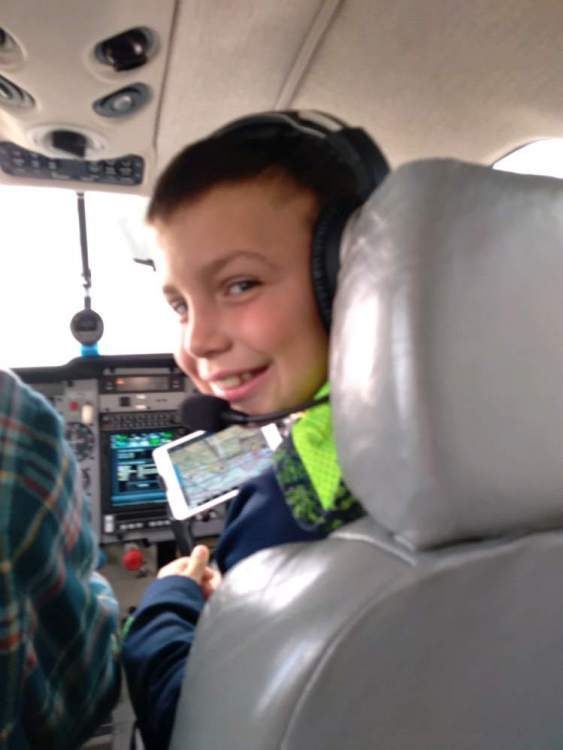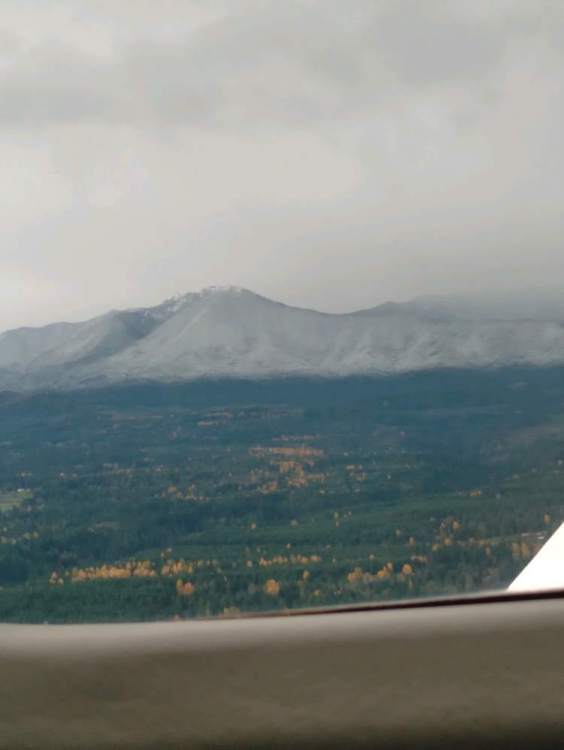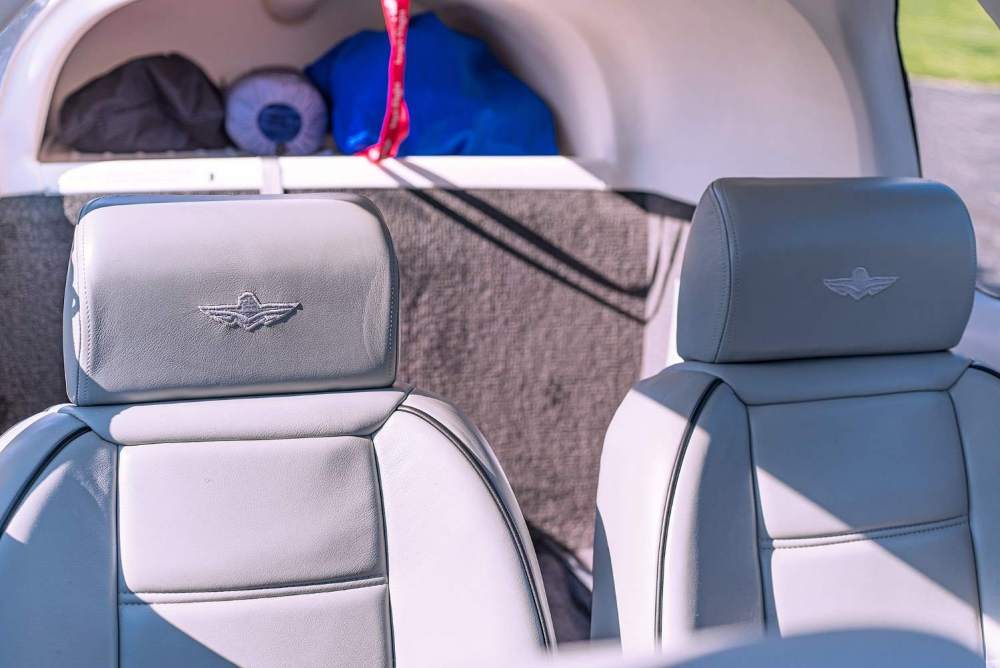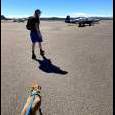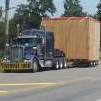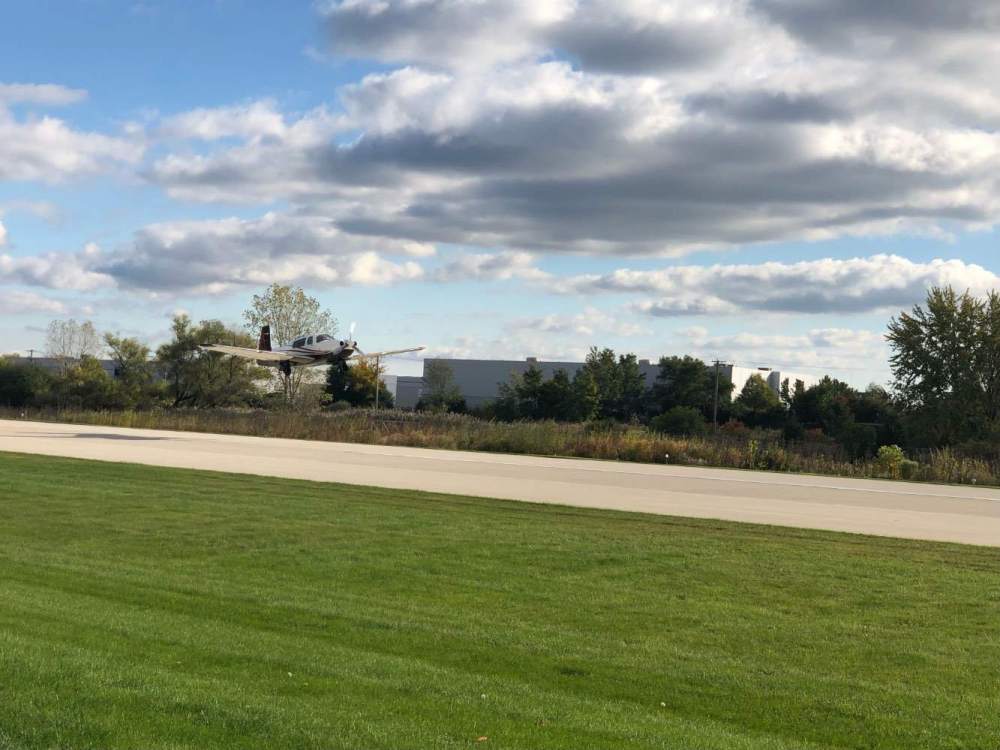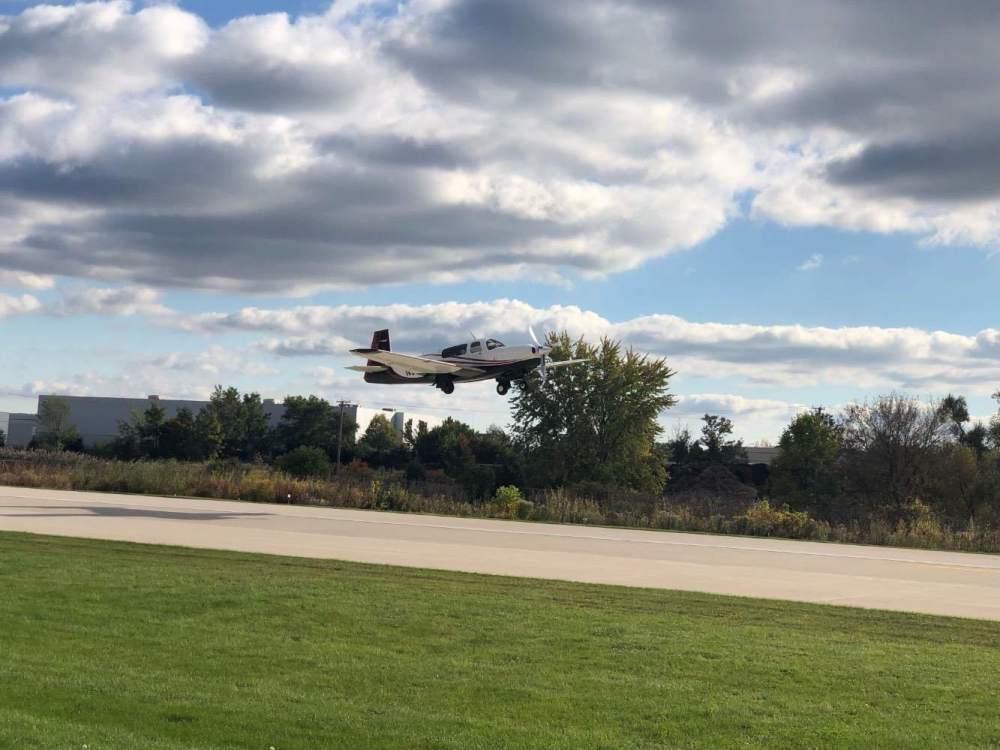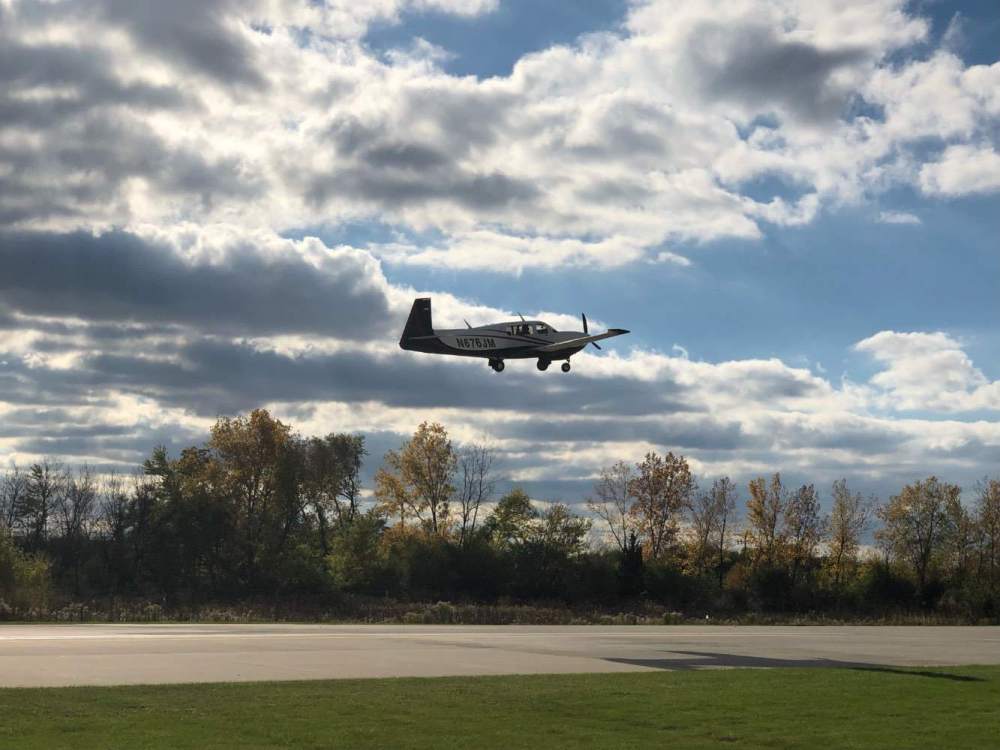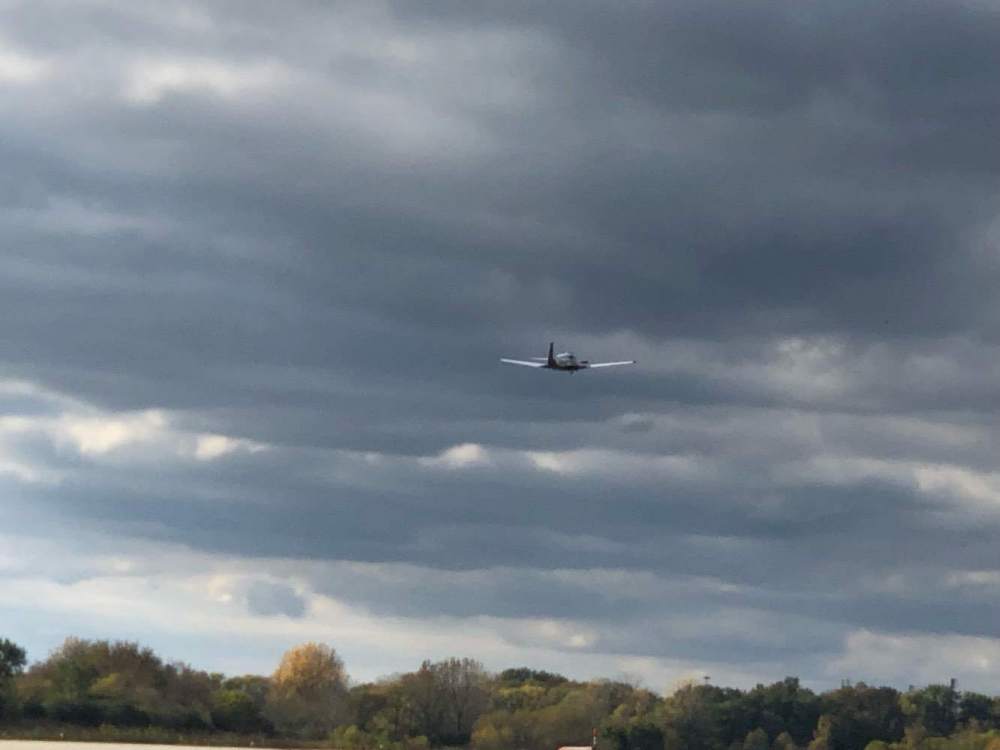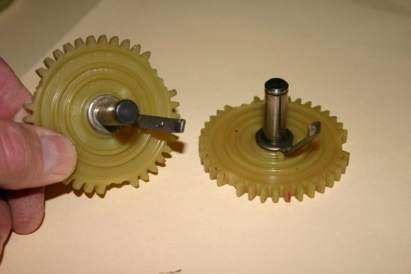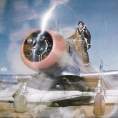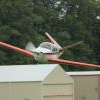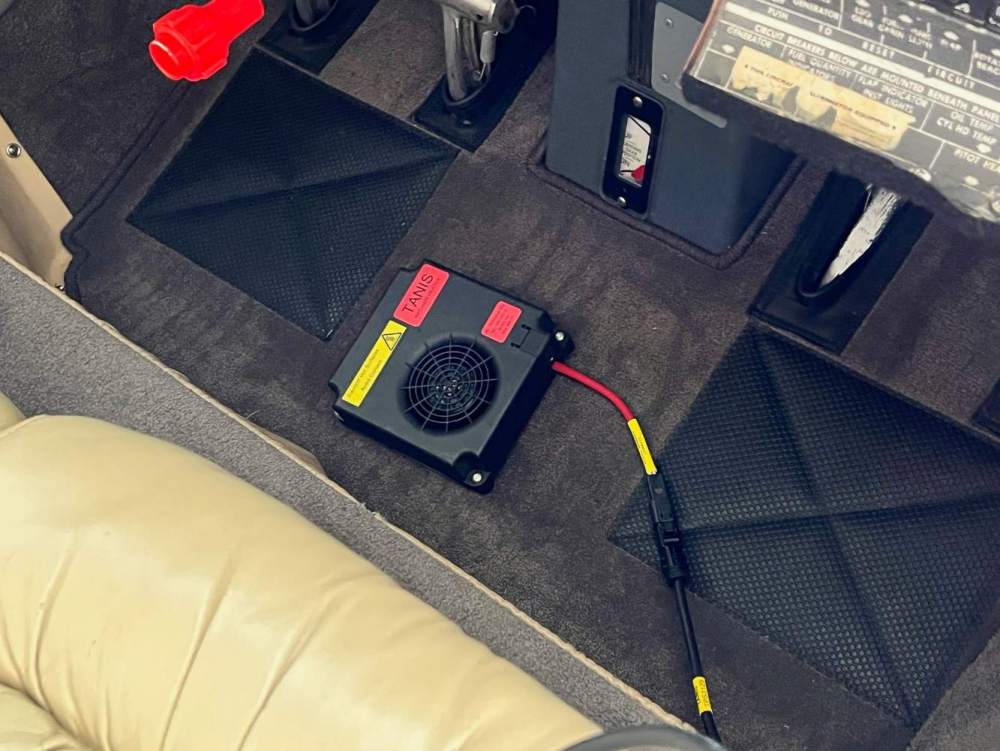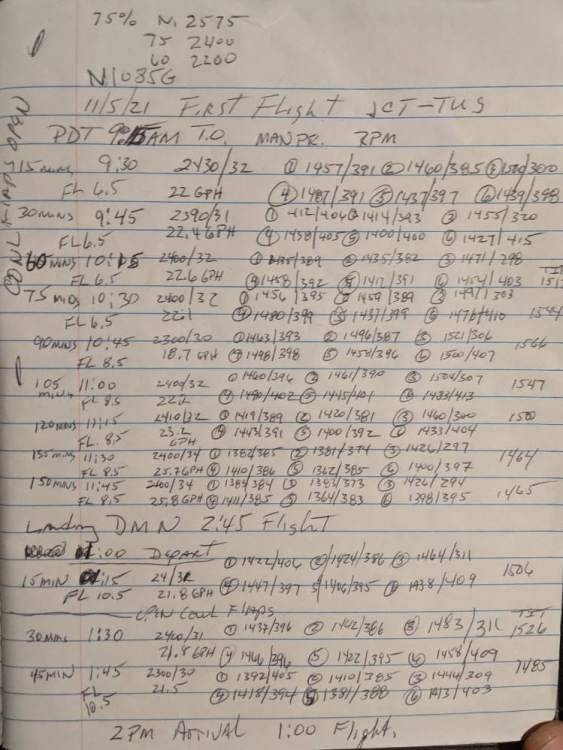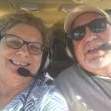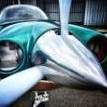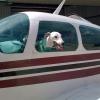Leaderboard
Popular Content
Showing content with the highest reputation on 11/07/2021 in Posts
-
Getting back to the original question here before this thread had to shift to correcting misunderstandings of cardiopulmonary physiology. 10ppm in flight in and of itself should be no big deal, though admittedly its impact on hemoglobin oxygen delivery to tissue would increase as altitude goes up in a way that the OSHA standard levels don't fully capture. I originally didn't want a Sensorcon specifically because I didn't want to know about levels that low getting into the cockpit in flight - it provides a meaningless number as a source of stress without detecting real hazard. One could reasonably look for small gaps in the firewall and cabin floor that could be sealed easily based on that information, but those gaps aren't ever likely to become really dangerous. I've changed my opinion a bit after the experience of @AlexLev. He saw very low levels in the cockpit with the heat on, but his baseline with heat off was zero in flight. I told him to blow it off (pun intended?). Investigating further led to him finding a minute hole in his muffler leaking into the heat shroud - that tiny hole could have grown rapidly to become seriously life threatening in a hurry on a cold winter flight. It was a good early catch that was facilitated by the high sensitivity of the Sensorcon. I think the bottom line is that low levels are acceptable in cruise and perhaps inevitable on the ground. However, any increase upon turning on the heat warrants close inspection of the muffler.4 points
-
4 points
-
Yup - I should have added any significant change from baseline (even at "safe" levels) for a given flight condition should warrant close inspection of the entire exhaust, not just the muffler. Also @PT20J makes an important point regarding much more CO at rich mixtures. The graph below is the best I could find to illustrate. Mixture changes obviously have a big impact while ROP, so it's not alarming for the baseline to be higher at takeoff and after GUMPS. Below a stoichiometric mixture, the curve flattens out significantly, but there are still potentially threatening levels of CO produced at even the leanest combustible mixture, so being deep LOP does not assure safety.3 points
-
I actually wish you would go into your medical background because you’re really confusing some pretty fundamental concepts. The O2 level in the cockpit is completely irrelevant for the exact reason you mentioned in your post - everyone has different physiology. If my SpO2 is 88% and my son’s is 96% then I need supplemental oxygen and he would not be likely to benefit from it. It’s not about “wasting” oxygen it’s about titrating a medical therapy to a clinically relevant endpoint (which is something I do every day at work). I appreciate you have a little knowledge on the subject and are eager to share, but please consider that not everyone has the background and ability to differentiate between the well meaning and misinformed, malicious and intentionally misleading, and accurate medical information (as we’ve proven in the last 20 months). With all due respect, if you don’t know what you’re talking about then please keep it to yourself. No one needs this right now. There’s a reason we monitor cockpit CO levels and individual SpO2 levels. As one of my son’s t shirts says (available for purchase at his Etsy store) “I can explain it to you, but I can’t understand it for you.”3 points
-
I’m not even sure where to start here, there’s so much to comment on so I’ll start with the one statement that is true - most pulse oximeters can’t differentiate between O2 and CO so if you are in an environment with high levels of CO your SpO2 reading will be falsely elevated. There are co-oximeters that will give you both readings which we use in the hospital to screen for CO poisoning but they are expensive and there’s no point in having one in your plane since you know exactly what the CO levels are. i think almost everything else in that post was wrong or misleading. Pulse oximeters are definitely not “more harmful than beneficial.” Anytime you take an action based on a test result you need to understand the characteristics and limitations of that test. Pulse oximeters are great at letting you know your oxygen levels, when to use oxygen and how much to use. Yes, they will give you inaccurate readings when CO levels are high but since we all have sensitive CO indicators in our planes we will know when CO levels are high and at that point your pulse ox reading is not your concern - getting on the ground is! We’ve discussed this several times before on MooneySpace. FACT- a freshly dead human who fell asleep in their car from CO poisoning will NOT have ANY SpO2 reading because they have no pulse! No pulse = no pulse ox reading. Whoever came up with that 100% SpO2 reading has a fundamental lack of understanding about how a pulse oximeter works. Please, everyone. Stop doing your “research” while sitting on the toilet with your smartphones while lamenting the lack of fiber in your diet. Talk to medical professionals about medical issues and don’t get your medical facts from random people on the internet.3 points
-
2 points
-
2 points
-
This could help determine that the AI is, in fact, the problem. If we can swap out the AI for a known working one and that behaves properly then we know it's the AI and not further in the vacuum system. Overhaul seems like the most viable option. Dual G5s would be nice though...2 points
-
2 points
-
2 points
-
I am going to attempt to get out the baggage door today. Should be interesting. There will be no video, only a stopwatch. not only should you open the cabin door in preparation for an off-field landing, it’s also important to close the latch and wedge a coat or blanket ibetween the door and frame to lessen the likelihood that it closes up on you. -dan2 points
-
Very common location since the firewall essentially drains into a little funnel, right on top of nose wheel by way of the bottom cowl attach flanges. ive tracked down 2. easiest way is to clean the engine are very well back there. Harbor freight sells an attachment for an air compresssor that’ll let you blast solvent on it. Get it nice and clean. Then ground run it and look for the spurt. in my case one time was the oil pressure gauge hose. Another was prop governor coming loose. Could be anything on the accessory case.2 points
-
While it is good to have an emergency exit, its practicality will depend on a number of things going absolutely right in an emergency. Something everyone should do so they understand what it takes is to practice egress on the ground using the baggage hatch. If your over 20, it wont be that fun. If you have just landed in a beanfield and upside down with broken ribs, next to impossible. It will be a human effort if you are injured at all to get out thru the cabin door, so MAKE SURE it is open before you land anywhere but an airport so it is not jammed shut. This one simple thing probably saved my life in 2014. I was unconscious, but someone knew right away were to to pull my busted up carcass out of a plane on fire. I am sure everyone who has been injured can concur here @mooneygirl @DanM20C2 points
-
I sent my Bendix 3000 series dual mag for its 500 hour IRAN a couple of weeks ago. I talked with two shops that my IA has good experiences with and recommended. They both service our dual mags, and they were both very helpful on the phone. They each estimated about $1k in parts and labor assuming no surprises. I picked the one with the shorter backlog, and it happened that they also are the shop who IRAN'd it last time when the plane had a different owner. Aircraft Systems Inc in Rockford IL. They charged me $625 in labor plus parts, for a total of $1115. That included replacing one of the two capacitors at $208. They turned it around in two days and were easy to work with. No website. (815) 399-0225 G&N Aircraft in Griffith IN. They had about a 2-week backlog.2 points
-
Did this adjustment in flight this eve - definitely a win. I did it in calm air at 8000 ft in GPSS MODE. My cross-track error went from 1500 feet right of course to pretty much right on (oscillates 200-400 feet to either side). That’s as good as I could get it though. @Jim Peace’s 500ft error might not be that far off from what’s possible. I thought it might do a better job flying an ILS so I gave it a try - nope - it still acted like a drunken sailor down the localizer course. Oh well, I’m still gonna call it a win2 points
-
In 1969 I was 14 year old kid working at the local airport when a transient Taylorcraft ground looped and nosed over. The only damage was a bent prop. The FBO owner/mechanic/instructor had me take the prop off and we put it in a press, straightened the prop and re-installed. The guy flew home a couple hours after the prop strike. Times have changed. Lee2 points
-
Did some approaches and finished up the Wings phase I started last Mooney summit with Mike, @Rocket 305, our new local CFI. No pics, unfortunately. -dan edit… @Rocket 305 got some departure pics. I was wondering who that suspicious character by the taxiway was…. Thanks, Mike. I don’t get to see this perspective so often.2 points
-
They're not really. The tube from the headset goes to a rubber Bibby that sticks in your ear. There are a few sizes of Bibby. The mic is a clear plastic tube with a bit of foam in the end. I have the more modern version of the same headset. I can get pics of it. I don't use it as the quality of the mic is awful and the newer over thebear headsets have noise cancelling mics and I repeat myself less often. Anyway the newer kine hang on your ear rather than the headband but they are functionally the same. If someone made me a Plantronics quick disconnect to aviation two prong adapter I'd use my Bose1 point
-
Here's a pertinent article with some pics that show the gear with the arm. The gear rotates so that the arm reaches the lead of the appropriate spark plug wire when it fires. If the gear teeth break or the arm slips, the arm won't be in the right location when the spark fires and either won't conduct the spark or send it to the wrong lead or to the wrong place. http://crossfiremagneto.com/Crossfire_Magneto_Service/Welcome_5.html1 point
-
My 231 was idle for 5 years while I was overseas. I always meant to start it during trips home but it just did not happen. When I finally got to it I made the mistake of turning the prop - there was a stuck valve and you can imagine the results. Bent valve, indent of the top of the piston. We could have just pulled that cylinder but decided to do a top overhaul - the engine had 800 hours so it was a reasonable time to do it. The shame was when I parked the plane (in a hangar) it was running great, all compressions good. I could have prevented this by properly preparing the engine. Stupid, I know... Be careful with the engine.1 point
-
Send it out. you have to cut the instrument shop guys a little slack these days. I was talking to the owner of the local instrument shop the other day. He said the replacement gyro capsules they are getting these days are all crap. They have to do the overhaul two or three times to get a good one. All the old timers that knew how to build these things are dying or retiring and the new guys don’t know what they are doing.1 point
-
I'm actually not sure what's back there. The mounting screw was actually pretty long because there is a gap between my panel and the hole for the screw. Once I got a screwdriver to touch the base of that hole, a 180 degree turn toward the course was enough to take away most of my 1500 ft offset. Then it took a bunch of trial and error with small turns in both directions before I figured out how precise it could get. I did the whole thing in GPSS while on a victor airway with the default nav page of my GTN650 measuring crosstrack in real time. I used a 1/32" screwdriver from a cheap set of jeweler screwdrivers like the one below. The black business end of the driver isn't nearly long enough, but the handle is so skinny that it fit into the screw hole in my panel and the one beyond it on the STEC30. I'm not sure a driver with even a slightly fatter handle would have worked. It took some trial and error feeling for the screw hole in the STEC30 head before I got the driver tip in the right place to work. https://www.ebay.com/itm/332853777963?chn=ps&norover=1&mkevt=1&mkrid=711-117182-37290-0&mkcid=2&itemid=332853777963&targetid=1262779892849&device=c&mktype=pla&googleloc=9010328&poi=&campaignid=10459841973&mkgroupid=123050527180&rlsatarget=pla-1262779892849&abcId=2146002&merchantid=116333718&gclid=Cj0KCQjw8p2MBhCiARIsADDUFVF6sDZ7-O_SKSIec3X895TTWaMS0ulyxUYpUEFNXS_jI6i-WjgsQYQaAqCSEALw_wcB BTW I did this over rural North Carolina in smooth air with no airspace or traffic nearby and a quiet radio. Still, the attention required did lead to some loss of situational awareness.1 point
-
Aero accessories of Van Nuys will do the 500 hour inspection on the dual mag. Do yourself a favor, however, and just get new capacitors with it. We had one fail 30 hours later and had to take the mag back back out and send it back off to get checked again.1 point
-
I care quite a bit more about my SpO2 than the ambient O2 level. Different people perform differently in the same environment. I also care quite a bit about determining what my hypoxia symptoms are and being able to identify them before losing the ability to react. Supplemental O2 is cheap. The pulse demand systems and boom cannulas are comfortable. It’s really no burden to use them above 10,000 which is where my levels start to really fall off. -dan1 point
-
1 point
-
1 point
-
One month so that there are no concerns over the holiday travel period. I'm well aware of all of that. It is a pretty normal progression of the regulatory process. The fact remains that much of the developed world has already made the jump, the writing is on the wall.1 point
-
Awesome job actually doing it guys! Was it really just hidden behind the bottom right mounting screw? What type of tool did you use for the adjustment?1 point
-
got mine to go from a solid 500 feet right of track to less than 250 feet bracket left and right of course. Tried it on a few GPS approaches and it tracked dead on to the runway.... I just need an Acclaim type S now....1 point
-
It is not possible, with any technology in any spectrum, to 100% guarantee anything. The existing radar altimeters could have, and may have, and probably did at one time or other, experience interference from the previous C-band applications that lived next door in the spectrum in question, and all kinds of other applications that all have a finite probability of radiating in unintended ways. Should a much higher standard be held to 5G, which will already likely be an order of magnitude more reliable for interference mitigation than previous technologies? Should an entire block of needed spectrum be left fallow because there are some crappy RA units in the field? If you get in an airplane and rely on anything electronic for anything, or anything mechanical, or that burns fuel or uses energy or moves, you are already spinning the roulette wheels in all of these areas and hoping the statistics play out in your favor once again. All that can be done is what can be done to minimize risk as much as practical. Cost/Risk/reward is always a tradeoff, and I don't think this one favors the FAA since pertinent spectrum rules have been in place for decades. Risk in this case can be mitigated by not using questionable RA units or using other approaches or technologies. This will have to be done internationally, anyway, as most parts of the world are already using the C-band spectrum in question for 5G, so the only question is whether the FAA will really attempt to lock the US out of spectrum that is already used in essentially the rest of the world for the expected application. The US is pretty much in the process of getting left behind here.1 point
-
I hate the extra drive, but individual hangar and better approaches suits your mission much better. 2500’ is doable, but certainly more challenging at night with no straight in approach. I personally wouldn’t do that.1 point
-
This is dangerously incorrect misinformation. I suspect you are basing this on the inadequate knowledge that carbon monoxide irreversibly binds to hemoglobin--it does, but that is irrelevant to oxygen treatment. If you are still alive, not all your hemoglobin is bound to CO, and it's urgently necessary to maximize the oxygen transport by the remaining hemoglobin, as well as oxygen dissolve in water (which becomes significant with supplemental O2). Maximum oxygen intake is both the urgent and long-term treatment for carbon monoxide poisoning. Cranking up your O2 the highest practical flow may buy you a few extra minutes of life, and getting medical care for continuous oxygen treatment is urgent. To imply otherwise is irresponsible.1 point
-
Another good reason to use a quality detector. Home ones won’t detect at that level. from OSHA website: What are the OSHA standards for CO exposure? • The OSHA PEL for CO is 50 parts per million (ppm). OSHA standards prohibit worker exposure to more than 50 parts of CO gas per million parts of air averaged during an 8-hour time period. • The 8-hour PEL for CO in maritime operations is also 50 ppm. Maritime workers, however, must be removed from exposure if the CO concentration in the atmosphere exceeds 100 ppm. The peak CO level for employees engaged in Ro-Ro operations (roll-on roll- off operations during cargo loading and unloading) is 200 ppm.1 point
-
@Yariv I recommend the Tanis cabin heater. It is a 500 watt heater that you can install permanently or keep it portable. I have mine portable for now and I snake the cord through my storm window. I turn it on about an hour or two before I go flying so the cabin is warm. It is built with high quality electrical components and it is the right size for a Mooney fuselage. I'd be wary about buying a cheap 1800 watt ceramic space heater from Amazon and let that run unattended. The Tanis cabin heater is PMA approved and SwitcheOn has adequate capacity to handle its electrical load safely. I have them in stock at https://www.gallagheraviationllc.com/tanis.html1 point
-
Just a quick update, N1085G flight from KJCT to KTUS was uneventful. Engine break in was performed. We took off, circled around the field, just in case we had problems. Then headed home. We followed Lycoming break in procedures and took data the entire flight. Thank you @John Orcutt for all of the 45+ years of knowledge with Mooney and prior breakins. Why go at it alone?1 point
-
Check www.aeromotorsllc.com, they have a good rep for rebuilding fuel pumps for a reasonable price. Also supposedly a quick turn around.1 point
-
Guess i should order my spring now so that when a year later of flying and i need to replace it ill have one.1 point
-
CO is an intermediate product of combustion created when a rich mixture does not completely react to produce carbon dioxide and water. So, CO production is maximum at full rich takeoff power and minimum when running LOP where the excess oxygen reacts with (almost) all the hydrocarbons. Skip1 point
-
I did notice after getting my booster shot that I don’t get any radar altimeter readout on my G500 display. Not sure if it’s related.1 point
-
write the registered owner a letter? Beau Tarpein, 8481 Scotia Rd, Newport WA 991561 point
-
Well, since you asked... While I occasionally make extended downwind entries I do so with full knowledge that I'm the one 'barging into' the pattern; not part of it. Consequently, I put the burden on myself to see and avoid, and get the hell out of the other guy's way since I'm the intruder. If the situation looks at all busy I'll swing wide and enter on a 45. IMHO, at non-towered fields I don't expect radio calls from others but am happy to have them, but don't consider them 100% accurate, either! I don't get irritated either way; it's see and avoid and anything more is a bonus. But, that's just me1 point
-
Some ANR-related phenomena that may be similar to what you and @Hank describe: https://www.nytimes.com/wirecutter/blog/how-do-noise-cancelling-headphones-work/ https://www.soundstagesolo.com/index.php/features/178-eardrum-suck-the-mystery-solved These types of issues are clearly real, though I can find zero scientific literature on it. I can't imagine how it would be dangerous, but I'm kinda fascinated. These sensations are indeed experienced by a minority of people with ANR. The problems sound like a poorly understood quirk of central auditory processing that happens when ANR suppresses noise in a certain portion of the frequency spectrum. I'll ask a real hearing scientist and report back at some point. I hope I don't have the issue, or I'll be putting the A20s I just ordered up for sale on here shortly .1 point
-
I bet 8F must'a been colder than a witches breath for an Alabama boy like you! (My son says colder than a witches breath when he's being funny). Well its clearly not as cold up here as it used to be. But - 20's mid day is typical. But single digits mid day is also typical. A cold snap might be single digits negative mid day, but -20 or -30F at night. We don't seem to get -40F like we used to. (Scientists at NIST have measured a witches breath and a witch has breath as cold as -35F so it hasn't been colder than a witches breath in some time). BUT - I lie - I don't fly as a minimums rule to myself for safety of a possible off field landing, if it is below zero on the ground which usually means just waiting a couple of hours since it warms up pretty quick from say -20 to 5. And anyway, I heat the engine and I heat the cabin when it is cold, so I bet its 25-30 in the cabin even if its -20 in the hangar. And its 70 or more in the engine under its blanket. I sorta just like my A20's more and I sold my QT's about 5 years ago because I used them for like 6 months then I just stopped.1 point
-
Registration… https://flightaware.com/resources/registration/N74704 Last recorded flight…. (Not actual total flight history, just the last one recorded by flight aware…) https://flightaware.com/live/flight/N74704 See if that helps… You can try to search the tail number, and names… they may show up as MS members…. I only see references outside of MS for that…. Best regards, -a-1 point
-
This is an interesting thread. I'd considered the halo type before but never moved on them. I've used ANR since I started flying even during PPL training. I'm a late comer to Aviation even though I always wanted to fly and solo'd in a Piper special in the late 70's. No hearing protection then. I've had Tinnitus for probably 30 years and I lost the upper frequencies years ago. (You know that frequency that your wife's voice seems to live) It's funny we have an egg cooker that sounds a high pitch when the eggs are done, my wife, in her office upstairs can hear it going off and alerts me when I'm in the living room next to the kitchen. I can't hear it until a couple feet away. Hearing is important, all you youngins' out there, protect what you have.1 point
-
Hi Givey, I am so sorry for your loss. I don't want to put any blame or implication on your friend and I have no idea what happened. I have a tks airplane and I avoid ice. Having tks puts me a bit at ease because I am in a part of the country where ice can sometimes occur even when not forecast. So it puts my mind at ease. The system does work as I have, inadvertently been in light ice which is usually the most you might run across if you find ice when its not supposed to be there. Its been several years since I have run across ice by mistake, but I run the system just in case every time I fly through a cold cloud. I have lost friends and even more acquaintances from all sorts of things. Flying (one), snowmobiles (one), sailing (one), driving (several), bicycles (two), canoes (one incident and I just knew of them so not really an acquaintance but almost), hunting, atv, farming, ladders, bathtubs, (ok I am stretching beyond my friend circle to people whom I knew vs just simply read about in the paper), and that's what comes to mind now. Most of all I have lost friends who have died spontaneously from all sorts of maladies. I don't feel like flying is particularly special in being safe or unsafe. I do it and I enjoy it tremendously. I take a conservative approach as much as I can and I am a reasonably experienced pilot at this stage to have an idea of the sort of gotcha's that get people and I avoid some and others I have alternatives (e.g. often ice you can fly 12 hours before or 12 hours later and find nicer weather). There's an old saying with weather related airplane crashes. The search and rescue is done in beautiful weather. Of my 4 main dangerous activities, bicycles, rowing in sculls, cross country skiing, flying, I would rate them in order of danger (knock on wood) bicycles is the worst and I do a bunch of things to try and mitigate that risk. Ride with bright blinking lights. Carefully choosing which roads (this is a big one!). Stay away from dusk riding which means this time of year I have mostly transitioned to riding on my indoor bike trainer since I cannot get out in time to stay in. In bright sunshine. In all my activities, there are things big and small that can help significantly mitigate risk. In none of my activities, including taking a bath or shower (e.g. put some friction tape in the tub for goodness sake!), can we zero the risk. I am at peace with my risks by taking every measure reasonable and just going from there executing my plans. Or cancelling my plans and remaking plans on the fly depending on what is unfolding.1 point
-
Well, I’m interested, but it’s going to require a car chase and a shootout to keep me really hooked.1 point
-
There hasn't been a fly-in in the Midwest since @mike_elliott abandoned us for warmer weather. It is long overdue for getting together again. I created a club here, "Midwest Mooney Flyers." If you are within the Midwest states, please join. I'm hoping to do this soon, perhaps November 13/14. There is a survey (external link) there asking what, where, when, how often, etc. for our event(s). Even if you can't make this one, please join the club and fill out the survey so we can plan. I hope to see some old friends and meet some new ones!1 point
-
One of the questions for the A&P power plant exam is that an overly lean engine runs too hot. think about this. And I would say that half of the people I know that work on airplanes think that the further the red knob is pulled. the hotter it gets. Those are not people to get advice from. I’m certain they know how to fix airplanes, but I’m not certain they know the reason why the plane broke in the first place. Everyone’s different, and a lot of old wives tales exist among pilots, but I would say it may be even more exist among mechanics. Get your break-in advice from Lycoming who designed and built the engine. And temper that with the advice of the person who is warranting it. Follow the Lycoming advice, not to be contrary to the advice of the shop who built it. Do they tell you that lean of peak for example, burns valves, and they won’t warranty it after that? Then you should question the people who built it to begin with.1 point










